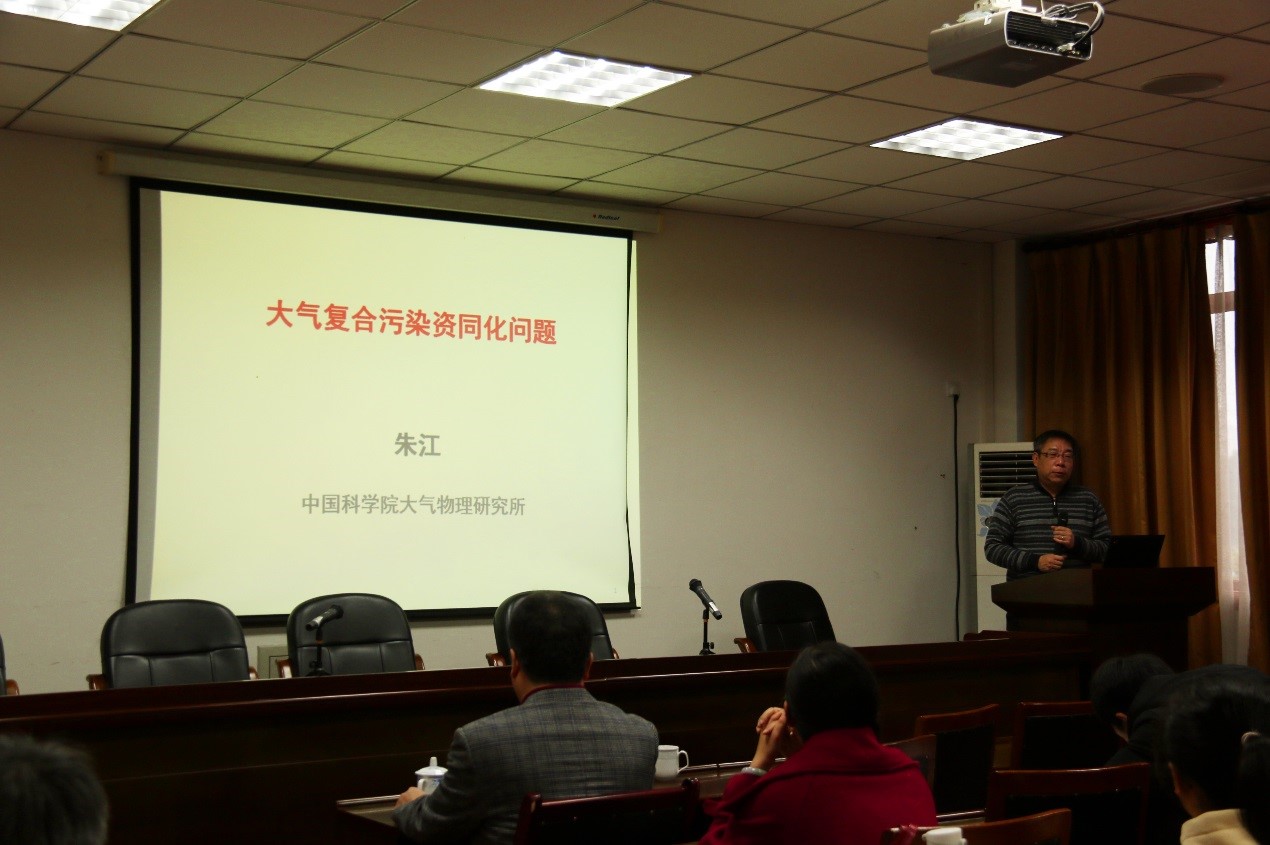Researchers Zhu jiang, Sun jianqi and Wang lizhi from the institute of atmospheric physics, Chinese academy of sciences were invited to give academic reports to our school
On the morning of November 26, Zhu jiang, Sun jianqi and Wang lizhi, researchers from the institute of atmospheric physics of the Chinese academy of sciences, accepted the invitation of the institute of atmospheric sciences and the office of science and technology, respectively, and delivered academic reports entitled “assimilation of complex atmospheric pollution data”, “east Asian winter climate variation mechanism and related prediction problems” and “transformation of climate science and technology achievements” at 215 room of meteorological building. The report was presided over by zhou jiiliu, secretary of the party committee of chengdu university of information technology, and teachers and students of the school of atmospheric science took an active part in it.

Firstly, Zhu jiang introduced the application of data assimilation in the research of climate change. He pointed out that the data assimilation model can incorporate more parameters, and the results are more reasonable and practical than simple interpolation method. However, the observation data of air pollution have the characteristics of large quantity, complex source and large quality difference, etc. In data assimilation, the quality control of observation data using the method of time-space continuity can automatically identify a variety of different data, and has important significance for the annual average estimation of parameters. Finally, he took the uncertainty of NH3 emission as an example, revealing that there is still a lot of room for improvement in the assimilation of air pollution data.

By analyzing the influence of snow cover and convection variation on winter precipitation in east Asia, sun jianqi discussed whether the factors influencing winter climate in east Asia were interdecadal. He suggested that to improve the ability to predict winter weather in east Asia, existing models could be continuously improved or reprocessed based on existing understanding of the mechanisms of climate change.
Wang lizhi introduced two new business systems introduced by the institute of atmospheric sciences of the Chinese academy of sciences, explained the characteristics of high investment, high innovation and strong professionalism of professional meteorological services, and positioned to set up an independent department of the platform for the construction of industry-university-research-application technology application team. He called for more people to join the meteorological industry and the research team of the institute of atmospheric sciences.
At the end of the report, the teachers and students questioned three experts, discussing the future of atmospheric pollution and the development of the climate change in east Asia. This exchange activity has an active atmosphere, which has greatly stimulated students’ enthusiasm for exploring relevant fields and expanded their understanding of relevant fields.
Expert introduction: Zhu jiang, director and researcher of institute of atmospheric physics, Chinese academy of sciences. His research interests include climate change and data assimilation of ocean and atmosphere.He was funded by the national outstanding youth foundation in 2002, awarded the second prize of national science and technology progress award in 2012 and 2017, andhe was awarded “he liang he li science and technology progress award”. More than 100 academic papers have been published. He is currently President of the Beijing meteorological society and editor of Advances in Atmospheric Sciences, an academic journal.
Sun jianqi, director of zhu kezhen – nansen international research center, studies climate system change, short-term climate prediction and extreme climate in mid-high latitudes. He has won the Lu JiaXi young talents award of the Chinese academy of sciences, the second prize of the national natural science award (the third accomplice) and the first prize of the achievements of meteorological science and technology progress of the Chinese meteorological society (the first accomplice). From September 1997 to June 2001, he received his bachelor of science degree from the department of atmospheric sciences, lanzhou university. From September 2001 to June 2006, he received his doctor of science degree from the institute of atmospheric physics, Chinese academy of sciences. Since 2006, He has been engaged in scientific research in institute of atmospheric sciences, Chinese academy of sciences. He has been a researcher since 2014.
